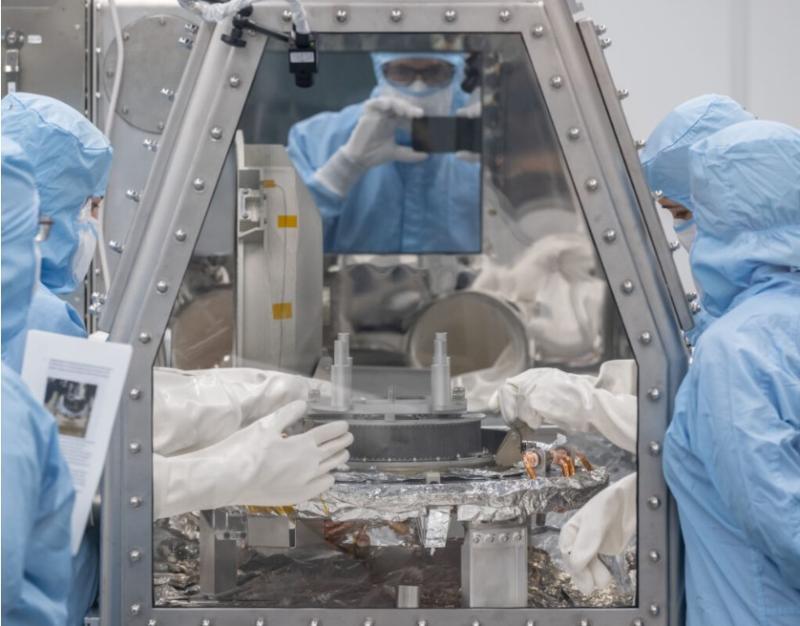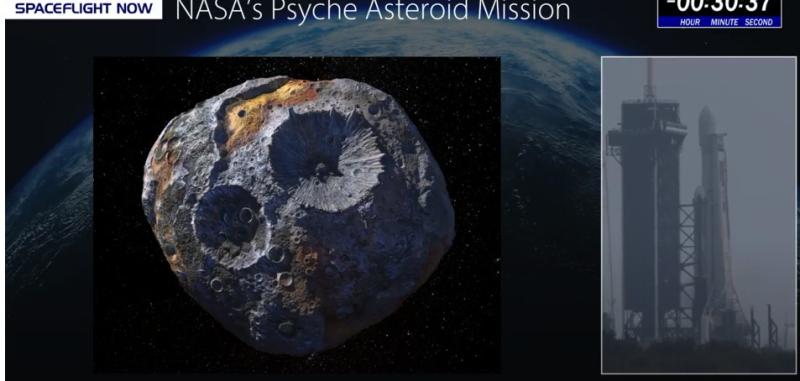NASA scientists have found evidence of carbon and water in the 4.5-billion-year-old asteroid Bennu rock sample, an indication of the building blocks of life on Earth.
The sample was collected as part of the OSIRIS-REx mission, which involved landing a spacecraft on Bennu in 2020 and taking a core sample before returning the sample to Earth on Sept. 24. The scientists showed off the asteroid material the first time on Wednesday.
The rock and dust sample are the “biggest carbon-rich asteroid sample ever deliver to Earth and will help scientists investigate the origins of life on our own planet for generations to come,” NASA Administrator Bill Nelson said.
The bulk of the asteroid material is contained within a sample collector, but NASA was able to show small dust and rocks, the largest about 2.5 centimeters in size, outside the enclosed container. Within two weeks of landing, scientists were able to perform quick analysis of the initial material by collecting images from a scanning electron microscope, infrared measurements, X-ray diffraction and chemical element analysis.
They even deployed X-ray computed tomography to produce a 3D computer model of one of the particles, highlighting its diverse interior, which provided evidence of what NASA termed “abundant carbon and water in the sample.”

Over the next two years, NASA will perform more analysis and will preserve 70% of the total sample for research by scientists worldwide.
Dante Lauretta, principal investigator for OSIRIS-Rex at the University of Arizona in Tucson, compared the Bennu sample to a time capsule that “offers us profound insights into the origins of our solar system.” The carbon and water “are just the tip of the cosmic iceberg.” Scientists believe an asteroid like Bennu crashed into Earth more than 4 billion years ago bringing water to our planet, which eventually made the Earth habitable, Lauretta said.
OSIRIS-REx was first launched into space in 2016 before traveling 60 million miles to Bennu and collecting a sample in 2020. It delivered the sample to Earth on Sept. 24 by releasing a capsule of the sample over Earth atmosphere, which was parachuted to land at the Department of Defense Utah Test and Training Range. The entire mission lasted seven years at a cost of $1 billion. The OSIRIS-REx capsule has continued a new mission to asteroid Apophis and renamed OSIRIS-APEX.
NASA successfully launched another asteroid-chasing spacecraft on Friday from Florida to reach a rare asteroid named Psyche, which is made of metal. No samples will be returned, however. Live coverage was planned for liftoff that occurred at 10:19 ET Friday. SpaceX provided the Falcon Heavy rocket for the launch.
